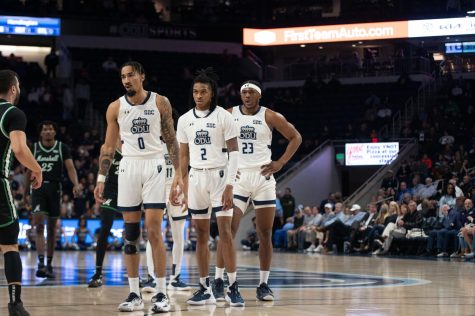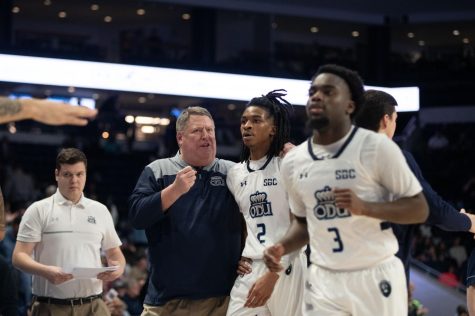The Associated Students of Colorado State University convened online due to inclement weather Feb. 22 for the 20th session of the 52nd senate.
After a new senator was sworn into office by Chief Justice Marcus Zacarias, senate viewed a presentation from New Era Colorado, the Cobalt Abortion Fund and the Raíz Planned Parenthood Action Fund, which educated senate on their ongoing efforts to lobby the Colorado legislature concerning local, state and national issues including housing prices, eviction guidelines and access to reproductive and gender-affirming healthcare, among other pressing issues facing young voters.
The presentation was led by guest speakers Kate Kelly, Kathia Garcia and Emily Jaggers, who also explored the “power of storytelling,” which will ideally allow for increased education and open dialogue on social justice issues.
The presentation then detailed the benefits of writing letters to the editor, which grant an opportunity for individuals to advocate for a cause or take a personal stance on an issue through news publications.
Executive reports followed, with Vice President Elijah Sandoval updating senate on current Student Fee Review Board processes and the ongoing search for additional members.
During judicial reports, Zacarias issued the Supreme Court’s ruling on Case #5202, determining by a 6-0 vote that the Legislative Cabinet wrongfully terminated a member of the cabinet by not abiding by the ASCSU bylaws, which mandate the termination of a cabinet member must be decided through the passing of an official piece of legislation.
Speaker of the Senate Nick DeSalvo issued a brief statement in response to the court’s ruling.
“I want to express, on behalf of myself and the rest of Legislative Cabinet, how sorry we are that the process wasn’t followed correctly and that individuals were hurt as a result of that process not being followed,” DeSalvo said. “This was uncharted territory for everyone within Legislative Cabinet, and we didn’t really have any idea of how to proceed with such a process.”
The ratification of two new members of SFRB then took place.
“I understand what it feels like to be part of a group that is underrepresented and faced with certain issues in society. I think I’m going to try and bring that to SFRB by making sure that every voice feels heard.” – Ben Stickland, CSU student
SFRB is primarily responsible for overseeing the determination and distribution of CSU student fees, reviewing legislation relating to student fee allocation and providing funding for student organizations, events and initiatives across campus.
Senior Ben Stickland and sophomore Ashton Barbone were nominated for the positions.
“I understand what it feels like to be part of a group that is underrepresented and faced with certain issues in society,” Stickland said. “I think I’m going to try and bring that to SFRB by making sure that every voice feels heard.”
The candidates were approved with unanimous consent.
Senate then discussed Lex 5205, “Amending a Gap in the Constitution.”
The lex aims to make small edits to the ASCSU constitution in an effort to maintain transparency and specificity during the senate ratification process.
The legislative authors hope these edits will reduce confusion and simplify the process of the ratification of elected officials after instances of procedural error prohibited the confirmation of elected officials in past senates.
The lex passed with unanimous consent.
Lex 5206, “Constitution Caucus Constitutional Amendments,” was also considered.
The legislation seeks to update the ASCSU constitution to reflect the amendments discussed and passed by the constitution caucus, which include minor edits to senate membership requirements and the process of approving future amendments and pieces of legislation.
The lex passed with unanimous consent but will need to be considered again in a later session after further committee review.
ASCSU Senate will resume Mar. 1.
Reach Sam Hutton at news@collegian.com or on Twitter @Sam_Hut14.











